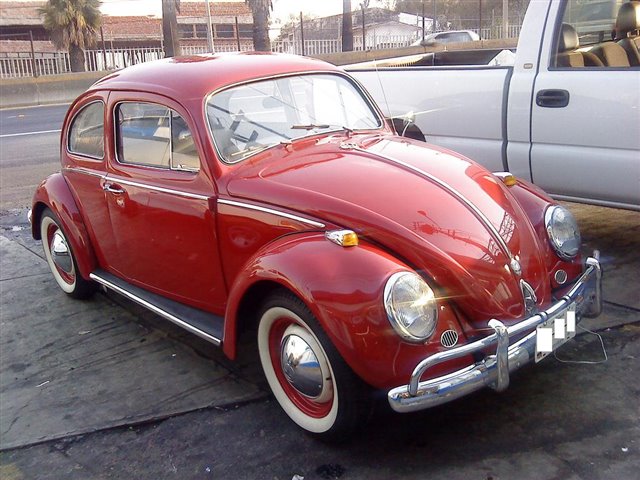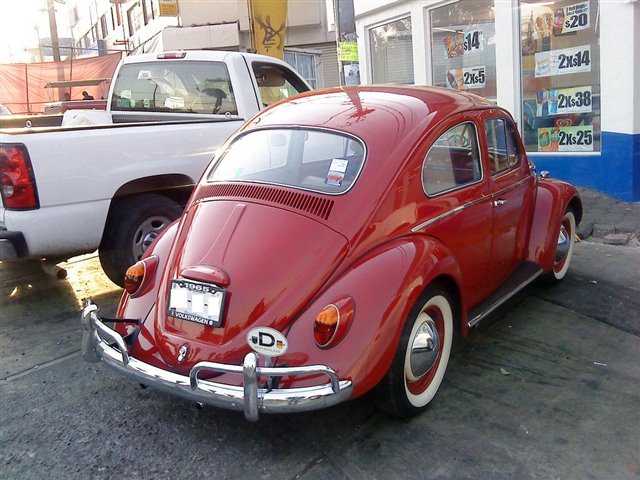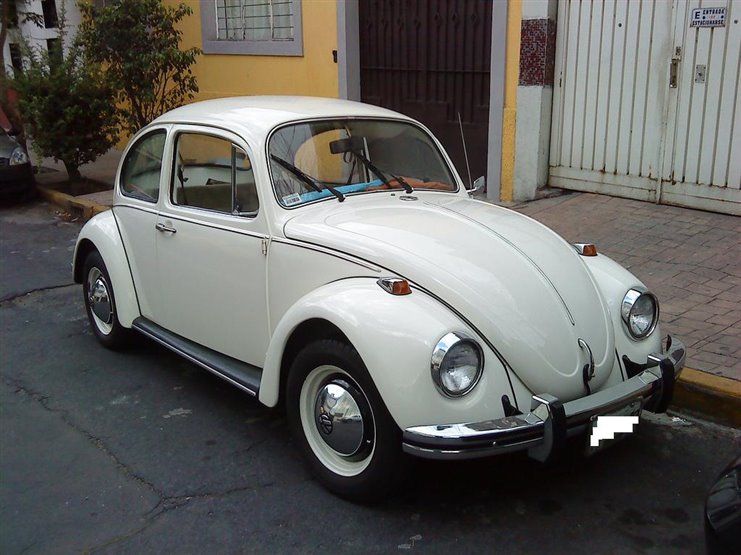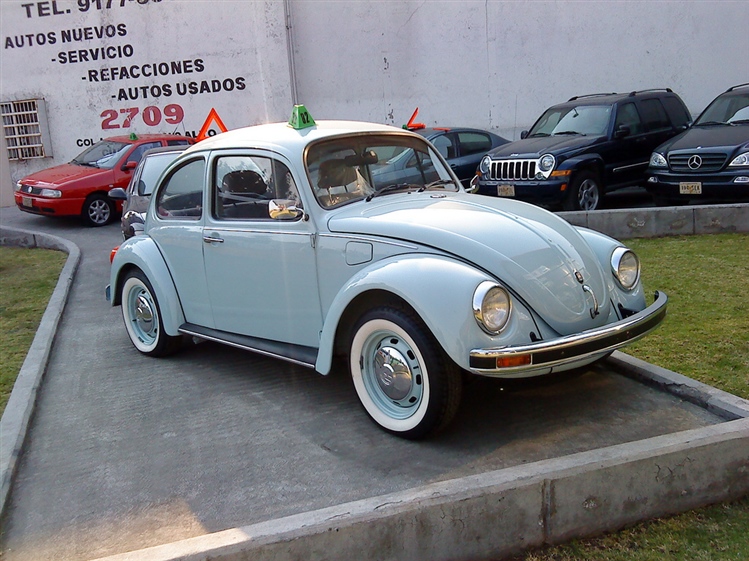On This Day in Engineering History
July 30, 2003 - The last 'old style' Volkswagen Beetle rolls off the production line
July 30, 2003. It is a Wednesday afternoon, another sweltering summer day in the Mexican city of Puebla. In the Hall of Sorrows, a traditional mariachi band is playing 'La Golondrina' (The Swallow), an 1862 song written by Mexican physician Narciso Serradell Sevilla, while he was exiled in France. It tells the story of a migrating swallow, lost and battered by the winds, of how, when The Swallow returns, the singer will make a safe space for the bird to nest beside him on his bed. 'La Golondrina' is sung by Mexicans when they say goodbye to a loved one.
This is fitting because the Hall of Sorrows, within the Volkswagen de Mexico plant, is where the very last Volkswagen Beetle ever built rolls off the production line.
Muddy origins of a beloved icon
Famously, the name 'Volkswagen' translates from German into English as 'Peoples' Car.' Infamously, it was called into life at the behest of Adolf Hitler, who wanted a 'people's car' to take advantage of the country's new motorway system, the Reichsautobahn.


1965 - Volkswagen Beetle 1200. Front view. | 1965 - Volkswagen Beetle 1200. Rear view.
Source: Wikimedia Commons
Ferdinand Porsche is credited with designing the Beetle (officially, the Volkswagen Type 1) in the early 1930s. As with many groundbreaking designs, the exact origins are muddy, with half a dozen different designers and companies producing similar ideas in the early 1930s. Beside Porsche, there were proto-Beetle designs from Edmund Rumper with his 1921 Tropfenauto, Josef Ganz's 1930 Ardie-Ganz and his Standard Superior from 1933, Hans Ledwinka's 1931 Tatra V570 prototype, and DKW's rear-engined streamliner prototype of 1933.
The best of them, and the closest to the finished product, dates back to 1925. It was the work of Bela Berenyi, the 'father of passive safety' then an 18-year-old engineering student in Vienna.
The final product was unveiled at the 1939 Berlin Motorshow when the press nicknamed the Volkswagen Type 1 'the beetle.' Later that year, while manufacturing began at the Wolfsburg factory, Hitler's other ambitions got in the way. Beetles were still produced, although production was primarily given over to other priorities. Wartime production of the Beetle ended in 1944, with full production at Wolfsburg only taking off after the Second World War, under the guidance of the British Army.
Fast forward to...
March 1954, Mexico. The local car market is dominated by big automobiles from the country's northern neighbour, the United States. At Mexico City's Ciudad Universitaria, the "Alemania y su Industria" (Germany and its Industry) exhibition of that year is showing four vehicles that illustrate what Volkswagen has to offer: a pair of Volkswagen Type 1 saloon (aka 'station wagons') cars, a convertible and a VW Bus, the 'Type II station wagon.'

1972 - Volkswagen Beetle 1500. Front view.
Source: Wikimedia Commons
By now, the Volkswagen Type 1, unofficially called the 'Beetle,' had become a major hit in Europe. Mexicans, too, were impressed. So much so that Prince Alfonso de Hohenlohe (descended from a friend of Ferdinand Porsche) entered seven 1200cc VWs in the 1954 Carrera Panamericana rally, a race stretching across 3211 kilometres. While they didn't win, they didn't drop out either, proving they were up to the test.
The rally had two other results - the setting up of Volkswagen Mexicana, S.A and Hohenlohe founding the country's very first Volkswagen dealership, the Distribuidora Volkswagen Central, S.A. de C.V. (Central Volkswagen Distributor), which opened in 1955.
The high
Mexican construction of the Beetle began in 1961, with 250 units built by Automex. In June the same year, Studebaker-Packard won a six-month contract to assemble Beetles from kits imported from Germany. A year later, the first Volkswagen assembly plant, the PROMEXA (Promotora Mexicana de Automóviles - Mexican Automobile Promotor) factory in Xalostoc, Mexico State, began building ten Beetles each day. In three years, demand rose to the point where a 2-million-square metre plant was opened (in 1965) at Puebla, in Puebla State, east of Mexico City. They began rolling off that production line in the 'summer of love,' 1967.
1972 was a record-breaking year for the Beetle when the 15,007,034th car came off the production line and on its way to a proud new owner, overtaking the Ford Model T's record set between 1908 and 1927.
The morning after the night before
The Beetle became the top-selling imported car in the United States by 1960. During the next decade, Beetle sales had noticeably slowed in Germany. Later, hippies in the US would make the Beetle the ultimate '60s four-wheeled, flower-power icon. But in the early 70s, this, too, had passed its peak.
It wasn't simply the music and fashions that changed in the 1970s. German Beetle production and ongoing German development of the model ended at Wolfsburg on July 1, 1974, after 11,916,519 units. The last German-built Beetle left the production line at the Emden plant in 1978 but continued in Australia, Nigeria, and… Mexico.
A watershed moment came in 1977. The US Clean Air Act reduced the amount of carbon monoxide and nitrogen oxide a vehicle could pump into the atmosphere. More demanding safety requirements, a weaker US dollar, and stiffer Japanese competition concentrated Volkswagen's minds on the viability of continued Beetle sales in the US. Volkswagen decided to concentrate on the Rabbit (the VW Golf, renamed for the US market) instead.

1984 - Volkswagen 1200L Sunny Bug. Limited edition exported to Europe.
Source: Wikimedia Commons
The Beetle Returns
While European production had ended by 1978, Volkswagen began importing Puebla-built Beetles into Europe. Essentially, they were the same as the old German builds, but with a 33 horsepower 1200cc 34CV engine, which differed from the Mexican version. When the rear air vents were removed in 1982, there was even less to distinguish the 'new' imported Beetle from the old German version. In September 1980, the company produced the 1,000,000th Mexican-made Volkswagen Beetle. The following year, Volkswagen de Mexico produced the 20,000,000th Beetle.
The end of the road
On the surface, the cars that appeared during and after World War Two looked little different to the vehicles that ended the Beetle's run decades later. But changes there were, 78,000 of them - all subtle changes to the interior, and exterior. More notably, swapping out the old semaphore style indicators for indicator lights. Later, moving the indicator housing to sit on top of the front wheel fairings, changing the shape of the bumpers, altering the dashboard, swapping colours and lighting or adding hydraulic brakes.
Like all good things, the Beetle had to end sometime. Importing the Mexican Beetle into Europe came to an end in 1985.
Eventually, time and competition caught up with one of the most iconic car designs ever to grace the world's roads. The sales and build records would fall to other vehicles. While the Beetle (both old and new versions) sold 23 million, the Honda Civic sold 24 million, the VW Passat sold 28 million, the Beetle's successor, the VW Golf sold 35 million, and the Toyota Corolla hit the 50 million sales mark.

2004 - Volkswagen Sedán Última Edición. Front view. Aquarius Blue with Grey interior.
Source: Wikimedia Commons
After the decision to end production was taken, the last Beetles would be released as the Volkswagen Sedán Última Edición. This was a chance to luxuriate in the Beetle of old, complete with white wall tires. 2,999 were built and sold to the public, with No.3000 boarding a ship at Veracruz for the long voyage to the Volkswagen company museum in Wolfsburg, Germany. There was another that made a similar journey. A group of Mexican Volkswagen dealers pooled money to buy one Última Edición to send to the Vatican for Pope John Paul II.
All of which brings us back to the Hall of Sorrows and the song for a swallow that, in this instance, will never return.
Share your thoughts!
Did you ever own a VW Beetle, and what did you think of it? What other car do you think rivalled the Beetle's tough reliability? What current vehicle do you think will match the Beetle's success?
 By Stephen Phillips - IET Content Producer, with passions for history, engineering, tech and the sciences.
By Stephen Phillips - IET Content Producer, with passions for history, engineering, tech and the sciences.
